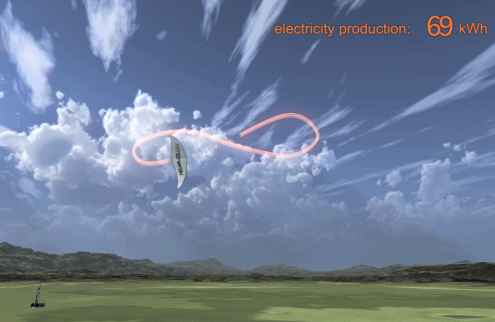Fossil fuels aren’t just killing the environment, we’re running out of them – fast. Could any of these emerging sustainable sources replace them?
Here are five emerging energy sources that could one-day change our lives – and maybe even save the planet.
1. Kitenergy
Harvesting wind energy isn’t exactly a new thing – wind turbines have been around since the 19th Century, believe it or not. But wind farms are not only an expensive investment, they're also a bit of an eyesore – often resulting in huge, and successful, opposition from the public. Yet turbines aren’t the only way to tap into the wind.

Over the past couple of years, Kitenergy have developed an alternative that's cheaper, less ugly and better at its job. As the name would suggest, Kitenergy involves a kite linked to the ground by two ropes. Using rotating mechanisms and generators on the ground, electricity is produced by converting the traction forces acting on the wing ropes into electrical power.
At heights of about 800-1,000m, the kites are exposed to high-altitude winds that are stronger and more constant than those at turbine level. And the obvious pro of a kite a kilometre in the sky is that you can barely see it. Check out an explainer video below.
2. Wattway
Synonymous with congestion and spluttering exhausts, the highway isn’t the first thing you’d associate with a renewable future. However, what if we could flip that on its head by transforming the road’s surface into a power source?
Created by French civil engineering company Colas, Wattway is a pavement material that can enable a road to harvest solar energy, and all without having to tear up its surface. Applied directly to the existing road, 20m² of Wattway panels provides enough electricity to power a single home.
Wattway was first piloted on a 29km stretch of road in Georgia, USA, called ‘The Ray’ (which we covered a while back here). Next up is using the energy to wireless charge electric vehicles as they travel down the highway. Definitely one to watch.
3. Wearables
Be it fitness trackers, watches or even smart jewellery, there's a good chance today’s average person will own at least one piece of wearable tech (whether they use them or not is another matter). But the obvious drawback is keeping the things fully charged. Fortunately a team of researchers from North Carolina State University are working on a solution.
That solution is more wearable tech – but this time it generates energy rather than uses it. Using a layer of thermally conductive material that rests on the skin, and a polymer layer that prevents the heat from dissipating through to the outside air, the team have essentially developed a way to trap body heat. The material then forces the heat to pass through a thermoelectric generator that is embedded in the clothing.
Converting body heat to electricity has been attempted many times before, but the North Carolina team’s concept is lightweight and can generate far more energy than previous generations – up to 20 µW/cm², which is more than enough to power your wearable tech.
4. Pavegen
In Brazil’s Rio de Janeiro, football is king. But without the money to pay for floodlights, the game often has to come to an end for the children living in the city’s favelas after dark. British engineer Laurence Kemball-Cook saw this issue and devised a solution that converted the players’ footsteps into electricity. As the children ran up and down the pitch, their kinetic energy was absorbed in the 200 tiles making up its surface, stored in batteries and used to illuminate the field.

That was the pilot project of Kemball-Cook’s company Pavegen – the producers of the kinetic tiles. Since then Pavegen has completed over 150 projects worldwide, including train stations, shopping centres, airports and other public spaces – even harvesting energy from runners of the Paris Marathon.
5. Bionic mushrooms
Using natural resources to harvest energy has been a mixed bag for us so far. However a team of researchers from New Jersey’s Stevens Institute of Technology have developed a radical alternative that's certainly on the sustainable side.
Using a 3D-printer, the team drew branched patterns onto the caps of living mushrooms using electronic ink combined with bio-ink. Then, by shining a light on the spiral pattern of the ink and causing the bacteria to photosynthesise, the team were able to produce electrons and form a conductive network.
Unsurprisingly, the amount of energy produced by a single mushroom isn’t enough for a single device, but several will be. Nonetheless, the technology is very much in its infancy. Continued work will only lead to improved productivity and a wide-ranging list of use cases.